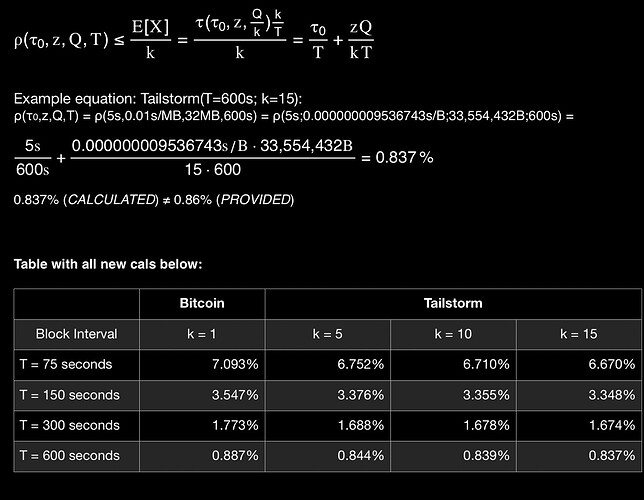Today I learned that, in December 2019, ZCash changed block time from 2.5min to 75s (spec, info page).
Major exchanges didn’t drop it, it still works, it survived blocksize peak, major pools still mine it.
Maybe our fears (“What will miners do?” “What will exchanges do?”) of making this change are overblown?
Since Compact Block Relay (CBR) (BIP-152) they’ve been (expectedly) so low nobody bothers to report them. You can only find some pre-CBR info which heavily depended on bandwidth so you’ll sometimes find LTC and DOGE folks complaining on old forum posts.
Since then, both LTC and DOGE have implemented CBR and you don’t anymore see the complaints.
Maybe because LTC has 0.02% orphan rate and ZEC has 0.03% (even with 75s block time) (as per ViaBTC)
“You did not throw an apple yourself therefore your calculation of apple’s trajectory is void.”
“Satoshi didn’t analyze a real-life blockchain therefore his analysis in chapter 11. of the whitepaper is void.”
You can’t just hand-wave results of a calculation like that. The same calculation (“Expected Propagation”) predicts Bitcoin propagation times between 0.13s and 0.43s (with orphan rates between 0.02% and 0.07%) - which is close to propagation times reported by bitnodes (0.2 - 0.25s average) and reported orphan rates (ViaBTC: 0.3% for BTC).
Why can’t you? Propagation is a function of latency, bandwidth, number of hops (network topology), and mempool overlaps. That’s it. There’s no some elusive secret cause that’s not captured by the calculation.
For 10s blocks, my calc predicts 3.69% for 99% mempool overlap. ViaBTC reports 3.4% for Nervos chain (which has 10s blocks). I suspect they could do some optimization to more often hit 100% overlap and get closer to 1.24%. (Edit: apparently they use something similar to CBR which they call NC-Max but they also dynamically adjust block times based on orphan rates, tuned to 2.5% target orphan rate).




 But if the end-result of a shorter blocktime is much more consistent blocktime as well then that’s pretty positive imo.
But if the end-result of a shorter blocktime is much more consistent blocktime as well then that’s pretty positive imo.